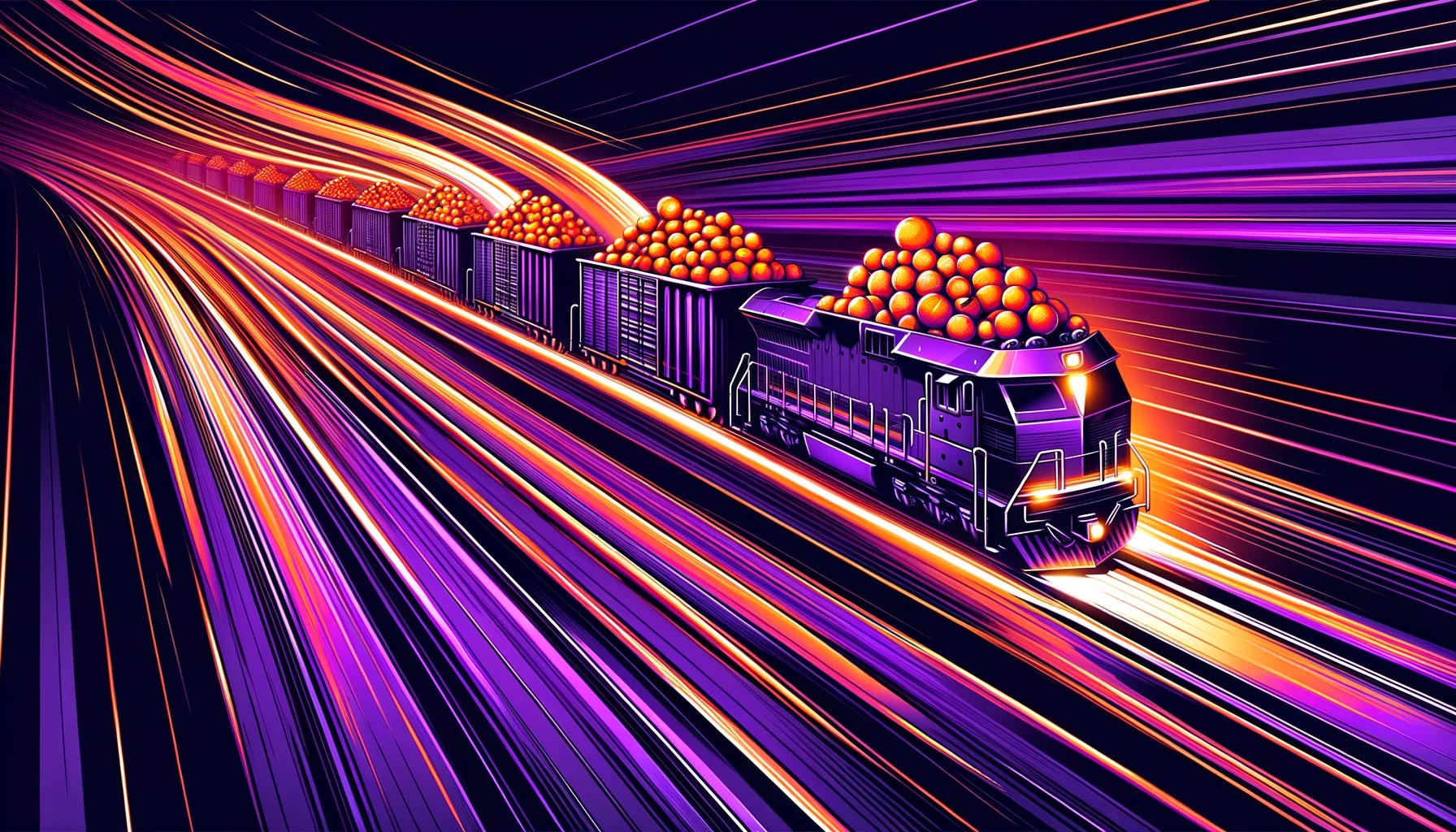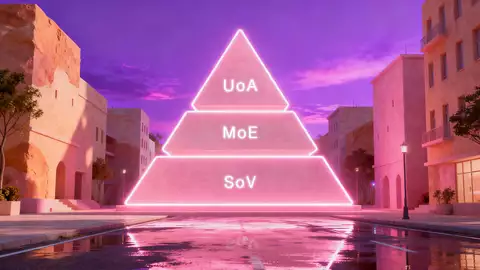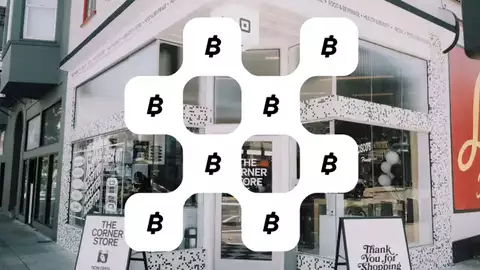
Lightning Network Explained with Real World Analogies
Posted about 2 years ago by LN+
Welcome to the dynamic world of Bitcoin's latest innovation - the Lightning Network. This network represents a quantum leap in Bitcoin's evolution, promising to speed up transactions and enhance scalability. If you're new to this concept, don't worry. We're here to demystify the Lightning Network with easy-to-understand examples, making it approachable for everyone in the Bitcoin ecosystem.
What is the Bitcoin Lightning Network?
The Lightning Network is a second-layer payment protocol designed specifically for Bitcoin. It's a clever solution to the scalability challenge Bitcoin faces, enabling faster and more economical transactions. The key? It processes most transactions off the main blockchain, settling them only when necessary.
Basic Lightning Network Facts
- Foundation on Bitcoin Network: Primarily operates on the Bitcoin network, occasionally on others like Litecoin.
- Security from Bitcoin: Utilizes the robust security of the Bitcoin blockchain for its underlying agreements.
- Currency Used: Employs Bitcoin's smallest unit, Satoshis, and can handle even smaller units for precise accounting.
- Widespread Adoption: Millions worldwide, including major corporations, are rapidly adopting the Lightning Network.
How Does the Lightning Network Work?
- Lightning Nodes: These are like checkpoints managing transactions.
- Payment Channels: Private pathways between nodes for quick exchanges.
- Off-Chain Transactions: Transactions in these express lanes bypass the congested Bitcoin blockchain.
- Settlement: Transactions are finalized on the Bitcoin blockchain when channels are closed.
Benefits of the Lightning Network
- Speed: Near-instant transactions.
- Reduced Costs: Lower fees due to reduced blockchain congestion.
- Enhanced Scalability: Handles a higher volume of transactions, addressing Bitcoin's scalability issues.
Real-World Parallels to Understand the Lightning Network
I have devised 4 real world examples to explain different levels of the Lightning Network in a hopefully easy to understand way.
- Debit Cards: Loading a debit card with funds is akin to receiving a transaction on a lightning channel. You can spend repeatedly until the balance depletes, similar to a lightning channel.
- Bar Tabs: Opening a bar tab is like opening a lightning channel. You settle the total at the end, just as you would settle a lightning channel.
- Two-Town Train Track: Imagine a train track connecting two towns with a limited number of carts. This illustrates how lightning channels have a fixed capacity for transactions.
- Two-Way Bridge Toll: Think of islands connected by toll bridges. Crossing these bridges (channels) involves fees (routing fees), illustrating how transactions incur costs on the Lightning Network.
The Debit Card Analogy
Understanding the workings of a Lightning Network channel can be made simpler by comparing it to a familiar financial tool: the debit card. Just as you load a debit card with a specific amount of money, like the paycheck you receive after a week's work, a Lightning Network channel is 'loaded' when you receive a Bitcoin transaction. This similarity extends to usage as well; you use your debit card for various purchases, such as groceries or a coffee, until its balance runs out. Similarly, you can conduct multiple transactions over the Lightning Network until the channel's balance is spent.
However, this analogy isn't perfect, as there are several nuances unique to each system. Let's explore these similarities and differences to gain a clearer picture of how the Lightning Network functions.
Similarities:
However, this analogy isn't perfect, as there are several nuances unique to each system. Let's explore these similarities and differences to gain a clearer picture of how the Lightning Network functions.
Similarities:
- Spending Limits: Like a debit card, a Lightning channel doesn't allow you to spend more than its balance. There's no concept of 'credit' in this scenario.
- Reloadable Nature: Both your debit card and a Lightning channel can be reloaded and used repeatedly.
- Closure and Withdrawal: Just as you can close your bank account and withdraw the remaining balance on your debit card, a Lightning channel can be closed, allowing you to transfer the remaining Satoshis back to your Bitcoin wallet.
- Multiplicity: Owning multiple debit cards is similar to having several Lightning channels at your disposal.
- Physical and Digital Forms: Debit cards can be physical, like cards or NFC-enabled devices, and Lightning channels can also be operated with similar physical tools, enhancing usability.
- Fee Structure: Typically, direct transactions with a debit card don't incur visible fees. Similarly, direct channel transactions on the Lightning Network are always fee-free.
Differences:
- Currency Type: Debit cards are typically loaded with fiat currencies like dollars or yen, whereas Lightning channels primarily use Bitcoin. Future developments like Taproot Assets and RGB might introduce stable coins, but their adoption is yet to be seen.
- Upper Limit: Unlike debit cards, which usually don't have an upper spending limit, Lightning channels have a predetermined maximum capacity, akin to a gift card.
- Lower Limit on Spending: Debit cards often have a minimum spending limit, while Lightning channels can facilitate transactions as small as a single Satoshi, offering far greater granularity.
- Intermediaries in Transactions: Using a debit card often involves third parties like banks and card processors. In contrast, Lightning transactions can occur directly between parties if they share a channel, omitting any intermediaries.
- Privacy of Transactions: Debit card transactions are typically visible to banks and card companies, but Lightning transactions offer significantly more privacy, with minimal information available to third parties.
- Security Risks: Traditional cards can pose security risks, as they contain all information needed for a transaction. Lightning payments, secured cryptographically, are inherently safer.
- Combining Balances: Unlike debit cards, where combining balances for a single large purchase is uncommon, Lightning channels allow for the aggregation of balances for larger payments, although this is not a widespread practice yet.

The Bar Tabs Analogy
Exploring the workings of the Lightning Network (LN) can be likened to the concept of opening and managing bar tabs, a scenario familiar to many. This analogy helps illuminate the foundational aspects of LN, particularly the opening and closing of channels.
First Night: Opening a Tab and Channel
Imagine walking into your favorite bar. The bartender allows you to open a tab, saying you can enjoy drinks up to $100 before settling the bill. Throughout the night, you add drinks to your tab without the need to pay for each one immediately. At the night's end, you pay the total amount owed. This system simplifies transactions, as you only settle once, not after every drink.
Drawing a parallel with LN, opening a bar tab is akin to opening a lightning channel. When you first open this tab (or channel), you're essentially setting a limit - in this case, a certain amount of Satoshis. As you order drinks, the bartender keeps a record of your consumption, just like each transaction you make is recorded on both ends of a Lightning channel. This ongoing record tracks the balance, although no actual currency exchange happens until the tab (or channel) is closed. When you're ready to leave, you settle your tab with cash, similar to closing a Lightning channel and settling the final balance in Satoshis.
Second Night: Payment Forwarding
The scenario evolves on your second visit. You bring a friend who is unknown to the bartender and therefore can't open a tab. However, you use your established $100 tab to cover their expenses, and they repay you privately.
This scenario mirrors having two Lightning channels. You have one channel with the bartender (node) and another with your friend (another node). Your friend can't directly pay the bartender due to the lack of a direct channel. Instead, they route their payment through you, and you forward it to the bartender. This is a practical demonstration of payment forwarding in LN, enhancing the network's functionality beyond simple one-to-one channel transactions.
Third Night: A Network of Channels and Circular Economy
On your third visit, the complexity increases. Your friend, now recognized by the bartender, agrees to supply him with pretzels on a $1,000 tab. Additionally, you extend a financial advisory tab to your friend: "Stay humble. Stack sats." This forms a triangle of economic activity among you, your friend, and the bartender, creating what's known as a circular economy. Money exchanges are deferred until there's a need to balance the tabs.
In LN terms, this is analogous to three interconnected nodes, each with a channel to the others. Transactions flow in a circular manner: from the first node to the second, the second to the third, and the third back to the first. This interconnectedness allows for a seamless flow of funds without the immediate need to close channels, illustrating the network's sophisticated capacity for multi-node transactions and the balancing of channels.
First Night: Opening a Tab and Channel
Imagine walking into your favorite bar. The bartender allows you to open a tab, saying you can enjoy drinks up to $100 before settling the bill. Throughout the night, you add drinks to your tab without the need to pay for each one immediately. At the night's end, you pay the total amount owed. This system simplifies transactions, as you only settle once, not after every drink.
Drawing a parallel with LN, opening a bar tab is akin to opening a lightning channel. When you first open this tab (or channel), you're essentially setting a limit - in this case, a certain amount of Satoshis. As you order drinks, the bartender keeps a record of your consumption, just like each transaction you make is recorded on both ends of a Lightning channel. This ongoing record tracks the balance, although no actual currency exchange happens until the tab (or channel) is closed. When you're ready to leave, you settle your tab with cash, similar to closing a Lightning channel and settling the final balance in Satoshis.
Second Night: Payment Forwarding
The scenario evolves on your second visit. You bring a friend who is unknown to the bartender and therefore can't open a tab. However, you use your established $100 tab to cover their expenses, and they repay you privately.
This scenario mirrors having two Lightning channels. You have one channel with the bartender (node) and another with your friend (another node). Your friend can't directly pay the bartender due to the lack of a direct channel. Instead, they route their payment through you, and you forward it to the bartender. This is a practical demonstration of payment forwarding in LN, enhancing the network's functionality beyond simple one-to-one channel transactions.
Third Night: A Network of Channels and Circular Economy
On your third visit, the complexity increases. Your friend, now recognized by the bartender, agrees to supply him with pretzels on a $1,000 tab. Additionally, you extend a financial advisory tab to your friend: "Stay humble. Stack sats." This forms a triangle of economic activity among you, your friend, and the bartender, creating what's known as a circular economy. Money exchanges are deferred until there's a need to balance the tabs.
In LN terms, this is analogous to three interconnected nodes, each with a channel to the others. Transactions flow in a circular manner: from the first node to the second, the second to the third, and the third back to the first. This interconnectedness allows for a seamless flow of funds without the immediate need to close channels, illustrating the network's sophisticated capacity for multi-node transactions and the balancing of channels.

The Two-Town Train Track Analogy
Delving deeper into the intricacies of the Lightning Network (LN), we can turn to the analogy of two towns, Aliceville and Bobburg, connected by a train track, to understand the concept of channel capacity.
Setting Up the Scenario:
Imagine Aliceville and Bobburg decide to build a train track linking their towns. Initially, there are 100 train carts, all stationed in Aliceville. These carts symbolize a newly opened LN channel, with Aliceville's node possessing 100 Satoshis.
Transactions as Train Movements:
When Aliceville decides to send 20 carts filled with oranges to Bobburg, this mirrors a LN transaction where 20 Satoshis are transferred. After this 'shipment,' Aliceville has 80 carts (or Satoshis) remaining, while Bobburg now has 20. This allocation represents the current capacity of each town (node) within the channel: Aliceville can send up to 80 more carts, and Bobburg can receive up to 80 carts. Conversely, Bobburg can send back up to 20 carts, and Aliceville can receive up to 20.
Channel Capacity and Liquidity:
The critical factor here is the fixed total of 100 carts, analogous to the total Satoshis in the channel. Neither town can add nor remove carts from the track, mirroring the fixed liquidity in a LN channel. This setup allows for a dynamic back-and-forth movement of value (carts/Satoshis) between the towns.
Long-Term Channel Usage:
As Aliceville and Bobburg continue to transact over time, they exemplify the long-term utility of a Lightning Network channel. The towns keep shuttling carts back and forth, similar to how LN channels facilitate the continuous exchange of Satoshis. This process can be sustained indefinitely, reflecting the enduring nature of many LN channels which remain active for years, facilitating the regular flow of transactions.
Channel Closure:
Setting Up the Scenario:
Imagine Aliceville and Bobburg decide to build a train track linking their towns. Initially, there are 100 train carts, all stationed in Aliceville. These carts symbolize a newly opened LN channel, with Aliceville's node possessing 100 Satoshis.
Transactions as Train Movements:
When Aliceville decides to send 20 carts filled with oranges to Bobburg, this mirrors a LN transaction where 20 Satoshis are transferred. After this 'shipment,' Aliceville has 80 carts (or Satoshis) remaining, while Bobburg now has 20. This allocation represents the current capacity of each town (node) within the channel: Aliceville can send up to 80 more carts, and Bobburg can receive up to 80 carts. Conversely, Bobburg can send back up to 20 carts, and Aliceville can receive up to 20.
Channel Capacity and Liquidity:
The critical factor here is the fixed total of 100 carts, analogous to the total Satoshis in the channel. Neither town can add nor remove carts from the track, mirroring the fixed liquidity in a LN channel. This setup allows for a dynamic back-and-forth movement of value (carts/Satoshis) between the towns.
Long-Term Channel Usage:
As Aliceville and Bobburg continue to transact over time, they exemplify the long-term utility of a Lightning Network channel. The towns keep shuttling carts back and forth, similar to how LN channels facilitate the continuous exchange of Satoshis. This process can be sustained indefinitely, reflecting the enduring nature of many LN channels which remain active for years, facilitating the regular flow of transactions.
Channel Closure:
A significant aspect of this analogy lies in the flexibility to adapt to changing needs. Imagine a scenario where both towns, after a period of balanced exchanges, find themselves with an equal number of carts – 50 each. At this juncture, they might decide that the track between them no longer serves their purposes. Perhaps there's a need to establish connections with different towns or for other strategic reasons. In such a case, Aliceville and Bobburg can agree to stop using their track. This decision is akin to cooperatively closing a Lightning Network channel. Upon closing, each town retains the carts (Satoshis) currently in their possession. They are then free to redeploy these carts on different tracks or channels, reflecting the dynamic nature of the Lightning Network where channels can be closed and resources reallocated as per changing requirements and opportunities. This flexibility is a key feature, allowing users to adapt to the evolving landscape of the Bitcoin ecosystem.
Caveats and Extended Realities:
While this analogy illustrates the basic mechanics of LN channel capacity, there are a few caveats and expansions to consider:
- Nature of the Carts/Value: In our analogy, carts carry value (oranges). However, in LN, the 'carts' (Satoshis) are the value themselves. Imagine the carts as being made of gold.
- Scale of the Network: The LN isn't limited to two nodes (towns) but includes thousands, interconnected in a vast network.
- Forwarding Across Nodes: Like in the real world, LN allows for the forwarding of value through intermediary nodes. If Aliceville wants to send value to a town beyond Bobburg without a direct channel, it can forward Satoshis through Bobburg. This is only feasible if Bobburg has sufficient capacity (carts) to facilitate this forwarding.
By visualizing the LN as a network of interconnected towns with a fixed number of carts, we gain a clearer understanding of how channel capacity, liquidity, and transaction forwarding operate in this innovative financial ecosystem.

The Two-Way Bridge Toll Analogy
The concept of routing and associated fees in the Lightning Network can be effectively illustrated through the analogy of a country with numerous islands connected by bridges, each featuring a toll station.
Setting the Scene: The Country of Islands and Bridges
Picture a vast country made up of many islands. These islands are interconnected by a network of bridges. For anyone wishing to travel from one island to another, crossing these bridges is essential. However, each bridge crossing incurs a fee at the toll stations. To add a layer of realism to this scenario, consider that the toll fees are structured in two parts: a fixed fee for every vehicle, and a variable fee based on the vehicle's capacity. For instance, a small sports car with two seats incurs a lower fee compared to a large bus carrying a dozen passengers.
Drawing Parallels with the Lightning Network
In this analogy:
Setting the Scene: The Country of Islands and Bridges
Picture a vast country made up of many islands. These islands are interconnected by a network of bridges. For anyone wishing to travel from one island to another, crossing these bridges is essential. However, each bridge crossing incurs a fee at the toll stations. To add a layer of realism to this scenario, consider that the toll fees are structured in two parts: a fixed fee for every vehicle, and a variable fee based on the vehicle's capacity. For instance, a small sports car with two seats incurs a lower fee compared to a large bus carrying a dozen passengers.
Drawing Parallels with the Lightning Network
In this analogy:
- Islands represent Lightning nodes: Each island is a standalone entity but connected to others in the network.
- Bridges symbolize Lightning channels: These are the pathways that connect the nodes, enabling the movement (transactions) between them.
- Cars are akin to Satoshis: The currency that moves through the network, facilitated by the channels.
The toll fees at each bridge are analogous to routing fees in the Lightning Network. This fee structure in the Lightning Network comprises two main components:
- Base Fee: This is a fixed charge applied to every transaction, regardless of its size. This fee can often be set to zero on many nodes, making small transactions particularly economical.
- Fee Rate: This is a variable charge, calculated as a percentage of the transaction's size, measured in parts per million (ppm). It varies widely, from as low as one ppm to several thousands, and can dynamically adjust based on market conditions and network demand.
Understanding the Fee Structure
Just as the toll fees in our island country vary based on the vehicle type and its capacity, in the Lightning Network, the fees depend on the transaction size and the policies of the nodes involved. This system incentivizes the maintenance and provision of channels (bridges), ensuring the smooth operation of the network while also allowing node operators to be compensated for their services.
Through this analogy, the complex concept of routing and fees within the Lightning Network becomes more tangible, illustrating how transactions are facilitated across the network and how fees are structured to support this intricate system of financial exchange.
Getting Started with the Lightning Network
- Select a Bitcoin Lightning Wallet: Choose an implementation like LND or CLN.
- Fund Your Wallet: Transfer Bitcoin, considering channel openings and transaction fees.
- Open a Payment Channel: Establish a channel with another node.
- Commence Transactions: Start sending and receiving Bitcoin payments.
Conclusion
The Bitcoin Lightning Network is not just an enhancement; it's a transformation. By leveraging this technology, you can participate more effectively in the Bitcoin space, unlocking the full potential of this groundbreaking innovation. Whether you're a seasoned Bitcoin enthusiast or a newcomer, understanding the Lightning Network is your ticket to a more efficient and scalable Bitcoin experience.
1 Comment
LN+ Admin wrote about 2 years ago
There is also the Airport analogy as DarthCoin pointed out on Stacker.news:
https://darthcoin.substack.com/p/the-lightning-network-and-the-airport
https://darthcoin.substack.com/p/the-lightning-network-and-the-airport
Please login to post comments.

Lightning Network Node
LightningNetwork.Plus
Rank: 5 / Titanium
Capacity: 35,000,000 SAT
Channels: 7
Latest news
Channel Rebalancing 101: Practical Strategies for Better Routing
Posted 25 days ago
From Digital Gold to Digital Cash: Why the Lightning Network’s Moment Has Arrived
Posted about 1 month ago
Square Launches Lightning-Powered Bitcoin Payments: Zero Fees Until 2027
Posted 2 months ago
Introducing Telegram notifications
Posted 3 months ago
Introducing Nostr DM notifications
Posted 3 months ago




